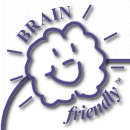
-
The context and value of a Brain - friendly approach
-
How the brain works in Language Learning
-
Establishing an optimum external learning environment
-
Establishing an optimum internal learning environment
-
Planning and presenting Brain - friendly lessons
-
Developing short to long term Memory strategies
-
Imagination and motivation - freeing student creativity
-
Learning styles and Multiple Intelligences in the classroom
-
Brain–friendly Study Skills (what do students need?)
-
Overview of holistic methodologies (balancing system and creativity)
-
The Teacher as Learner – Goals and reflections
-
Brain - friendly grammar - teaching at different levels –
-
A range of techniques for different Learning styles
-
Activating Vocabulary
-
Using colours and visuals
-
Creative communication
-
Classroom drawing
-
Personalising materials
-
Fun with phonology
-
Rhythm - songs - games for learning
-
The seamless robe - Suggestopedia - harmonising activities
-
Music (and silence) in learning
-
Movement (and stillness) in learning
-
Reading with music
-
Using props and realia
-
The text comes alive (communicative reading / comprehension)
-
Making Mind Maps
-
Visualising
-
Using visualisation ladders
-
Energy levels and group dynamics
-
Building student confidence
-
Pair and group work skills
-
Correction techniques
-
Monitoring communicative activity
-
The role of IT
-
Ways of recycling (including passive reviews with music)
-
Non - intrusive class management
-
Dealing with stress
-
Student led activities
-
Adapting the text book
-
Brain - friendly examinations?
-
‘Yes, but…’ discussion dealing with obstacles
-
Top Tips
-
Next steps
-
Teacher’s Treasure Chest









